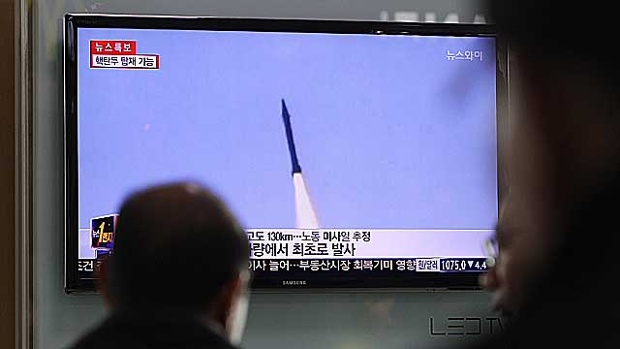-
Tips for becoming a good boxer - November 6, 2020
-
7 expert tips for making your hens night a memorable one - November 6, 2020
-
5 reasons to host your Christmas party on a cruise boat - November 6, 2020
-
What to do when you’re charged with a crime - November 6, 2020
-
Should you get one or multiple dogs? Here’s all you need to know - November 3, 2020
-
A Guide: How to Build Your Very Own Magic Mirror - February 14, 2019
-
Our Top Inspirational Baseball Stars - November 24, 2018
-
Five Tech Tools That Will Help You Turn Your Blog into a Business - November 24, 2018
-
How to Indulge on Vacation without Expanding Your Waist - November 9, 2018
-
5 Strategies for Businesses to Appeal to Today’s Increasingly Mobile-Crazed Customers - November 9, 2018
Korea brings rocket launch dates forward
On 5 February satellite images released by USA researchers apparently showed activity, including the arrival of fuel tankers at North Korea’s Sohae rocket site, leading to speculation a launch was imminent.
Advertisement
The South Korean and Japanese governments said on Saturday that a controversial North Korean rocket could now be launched between Sunday, February 7, and the following Sunday, February 14.
The planned satellite launch has been condemned by the global community as a disguised ballistic missile test that amounts to another serious violation of United Nations resolution, following the North’s nuclear test last month. Any launch would now take place before the Feb 16 birthday of late leader Kim Jong-Il, the father of current leader Kim Jong-Un. The launch, which the North says is an effort to send a satellite into orbit, would be in defiance of repeated warnings by outside governments that suspect it is a banned test of ballistic missile technology.
North Korea had earlier told the International Maritime Organisation (IMO) it would launch the rocket some time between February 8 and February 25.
“(The military) stays on readiness posture to respond whenever North Korea fires a missile”, said a defense ministry official on the condition of the anonymity.
The two leaders agreed that the launch of the North Korean rocket would represent “another provocative and destabilizing action”, according to the transcript of the telephone conversation issued by the White House. North Korea didn’t inform worldwide organizations of any other changes in its plan, and the rocket’s expected flight path remains the same, said Moon Sang Gyun, a spokesman for Seoul’s Defense Ministry.
U.S. state department assistant secretary Daniel Russel said recently that Pyongyang’s launch plans “argue even more strongly for tougher USA sanctions on the North”.
But he said Beijing strongly disapproved of the United States’ planned sanctions, and he urged Washington to do more to create a better atmosphere.
A vehicle carrying a PAC-3 missile interceptor arrives at a port on Ishigaki Island in Okinawa prefecture of southwestern Japan on Saturday, in preparation for the possible launch of a North Korean long-range rocket. China is also responsible for about 70 percent of the North’s trade volume, according to South Korean estimates.
The Six-Party Talks have been suspensed following North Korea’s withdrawal in April 2009 in protest against the U.N. Security Council’s condemnation of North Korea’s satellite launch 10 days earlier.
The separated first stage was predicted to fall in the Yellow Sea off the west coast of South Korea, followed by a second stage splashdown in the Philippine Sea.
Advertisement
“My guess is that if you took the rocket they used last time and put a warhead on it you probably would not be able to reach the United States”, said David Wright, co-director and senior scientist at the Global Security Program of the Union of Concerned Scientists.





























